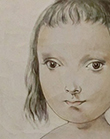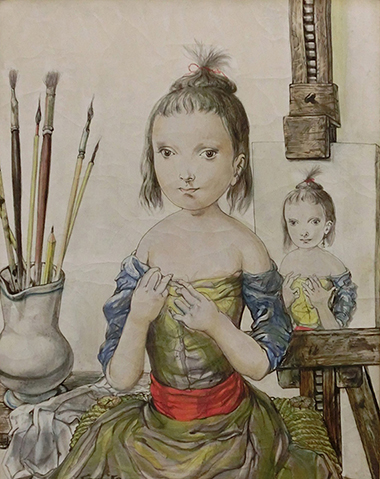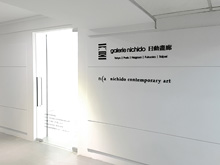Exhibitions
Foujita and the School of Paris

2016.05.21 - 2016.07.16

Foujita and the School of Paris
Date:2016/05 /21 – 2016/07 /16
Reception:2016/05 /21 04:00PM – 06:00PM
Opening Hours:Tues - Sat 11:00 – 19:00
Venue:galerie nichido Taipei
galerie nichido Taipei (3F-2, No.57, Sec.1, Dunhua South Road, Taipei 10557, Taiwan)
Artists:Léonard Tsuguharu Foujita、Marie Laurencin)、Moïse Kisling、Maurice Utrillo
_____________________________________________________________
Celebrating the 130th anniversary of Foujita Tsuguharu, galerie nichido Taipei proudly presents “Foujita and the school of Paris”. The Exhibition will include works by Foujita and iconic members from the School of Paris such as Marie Laurencin, Moïse Kisling, and Maurice Utrillo. We sincerely invite all guests to re-visit the fascinating era of the School of Paris, and encounter the mysterious yet luring art world of Foujita Tsuguharu.
============================================================
With names such as Yoshitomo Nara, Murakami Takashi, Leiko Ikemura…, Japanese artists have become more and more active in recent years, catching the eyes of audiences all around the world. It is without doubt that the first Japanese artist to open such a gateway to the international art scene, and be highly appraised right after his debut was Foujita Tsuguharu (Leonard Foujita, 1886-1968).
In the 1920`s, while Japan was eagerly studying the technique of Western Painting, Foujita was already the rising star among the artistic community“School of Paris”(École de Paris) . He held numerous successful shows not only in Paris, but also in Belgium, Netherlands, and Germany.Foujita was highly praised at that time for his personal performance, as well as for his identity as a Japanese artist to lead Eastern painters who were also learning the Western way. Foujita’s huge talent is represented by its ability to bring artistic awareness of the East into the modern art world that was previously dominated by the West, and further demonstrate the plentiful possibilities with the combination of both.When Foujita first arrived in Paris in 1913, he was 26 years old. During that period, he was able to visit Picasso`s studio, and saw many works from the Cubism. He was also greatly influenced by the thrilling works of artist Henri Julien Félix Rousseau. At the same time, Foujita befriended numerous artists such as Modigliani, Chaïm Soutine, and Kees Van Dongen. He further realized that instead of mimicking others, the most important thing was to develop a style of language that was unique in its own way.
During the years of World War I, Foujita stayed abroad. Without any economic support from his home country, Foujita lived in poor and harsh conditions, trying to develop his original way of expression little by little. At that time, he was stimulated by his fellow painters, and often went to Louvre Museum to explore the artworks from the ancient Egypt and Greek period. Both these experiences made a strong impact in the blooming of his artworks later on. Encountering simultaneously the avant-garde and the most classic type of western art, the traditional Eastern aesthetics that had long been left out in Foujita`s mind gradually re-emerged. Taking the unique expressive power of Ukiyo-e painters such as Kitagawa Utamaro and Suzuki Harunobu as his ultimate goal, Foujita further developed a sophisticated and creative technique of representation that blended Vanguard with the classic tradition, establishing his unique style within the School of Paris.
In the year following the end of World War I, Foujita showed six works at the Salon d'Automne in Paris. All of the six works were selected, and he was also recommended to become a member of the Salon. In 1920, his series of nudes were highly praised. In 1921, Foujita created another nude painting with“Queen of Mengpanasi” Kiki as his model. The white, ceramic-like skin type showing in the painting surface was greatly commented and analogized as the “ultimate white (grand fond blanc)”, assuring the irreplaceable position of Foujita within the Parisian art world. Foujita`s works contain shades of white that relate to white porcelain, delicate lines from the Ukiyo-e tradition, and monotone compositions; these traits not only surprise Western people, they also remind Japanese painters of their own mystic cultural traditions that have been rarely noticed before.
Widely celebrated during his time, Foujita continues to stay popular even nowadays, fifty years after his death. As mentioned above, his way of blending the aesthetics of East and West into one painting surface with the highest level of skill is precisely why Foujita may still be seen as the pointer within the art world.
(Art Critic, Deputy Director of the Hiratsuka Museum of Art)
Gallery








